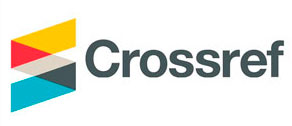BENDING A SINGLE-CAVITY ROTATION HYPERBOLOID BY CHANGING THE NECK LINE RADIUS
Abstract
Bending surfaces is one of the important sections of differential geometry. It examines the bending of both developable surfaces and non-developable ones. For developable surfaces (torsos), the practical side of the task is to find a sweep of a given surface compartment. The applied value of such a task is obvious, because it allows you to find the shape of a flat workpiece for further bending it into a finished product. For non-developable surfaces there is no concept of a sweep, however, a mathematical description of the intermediate positions of the surface when it is bent occurs as for a developable one. The basis of this description uses general approaches, the essence of which is the constancy of the lengths of lines and the angles between them on the surface when it is bent. This is ensured by the invariable first quadratic shape of the surface when it is bent.
The article considers the bending of a one-cavity hyperboloid of rotation into another surface of rotation. The equations of a one-parameter set of intermediate positions of the surface during its bending are compiled. They include a constant value, the so-called bending parameter. A specific bending parameter corresponds to a specific surface with a one-parameter set. This parameter is not included in the expression of the first quadratic form, which remains common for the set of all surfaces. This indicates the reliability of the obtained equations describing surface bending.
When a single-cavity hyperboloid is bent, the meridian of the surface, which is a hyperbola, transforms into another plane curve. The rectilinear generatrix of the original surface is transformed into a spatial curve on a bent surface. The article considers the possibility of rolling a bended surface along the original one. To do this, both surfaces must be positioned so that the rectilinear generatrix of the original surface is in contact with the line transformed into a curve on the bent surface at the corresponding point, and that the tangent at the point of contact of the curve coincides with the rectilinear generatrix. The rolling of surfaces one after the other occurs with point contact. When a curved surface rolls along a fixed initial (or vice versa), the contact point will move along these lines, passing the same path along straight and curved lines.
Keywords: single-cavity rotation hyperboloid, bending, transformation of a rectilinear generatrix, rolling surfaces, first quadratic form.




